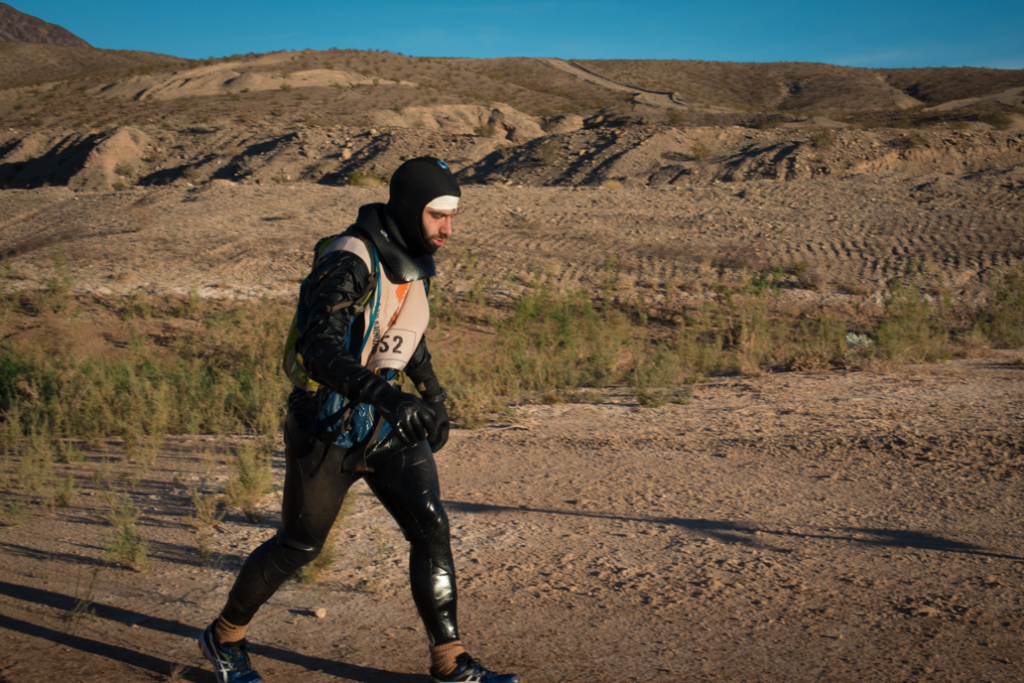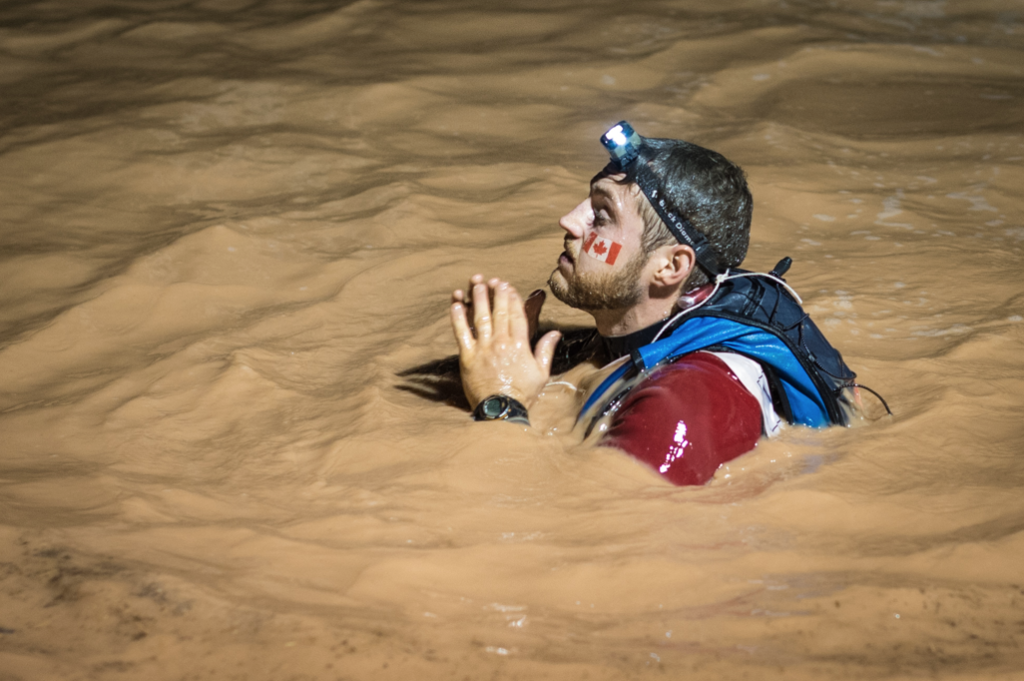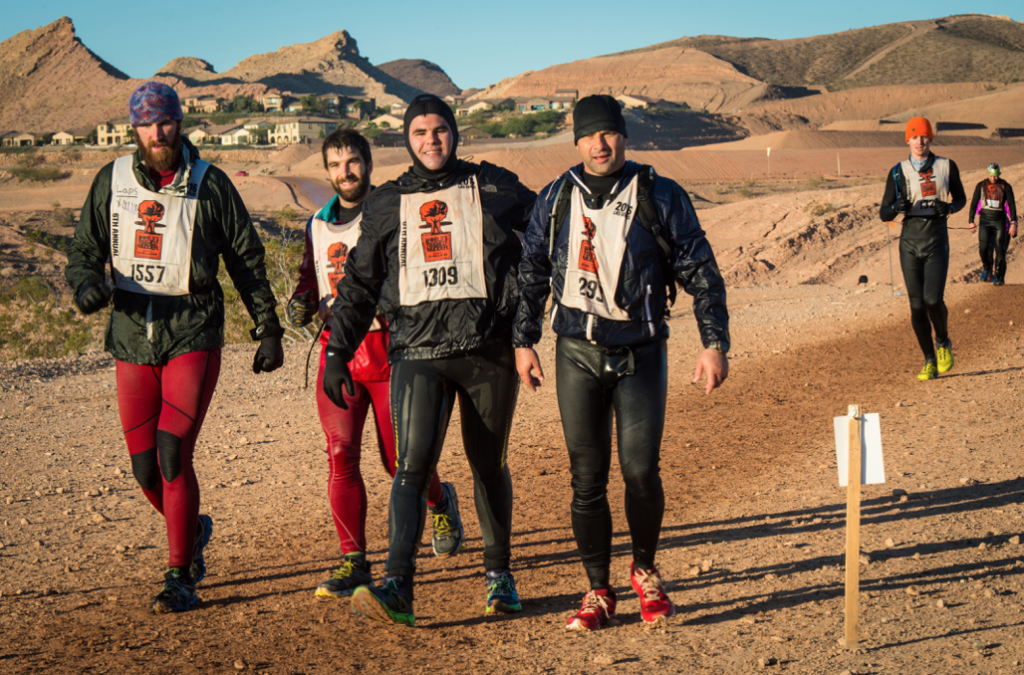
As the length of a race gets longer, the amount of advice that people want to give you increases exponentially. Part of that is because the amount of information you need to know to run an event increases exponentially with the distance and time duration of the event. As a mathematician, I really do mean exponentially. One of the athletes I coach traveled to the US for 24 days as part of a trip for a 24-hour race, World’s Toughest Mudder. He brought one bag for 23 days and one bag for 24-hours. That’s just one illustration of how complex a 24-hour event can be.
Right now I’m not going to focus on any specific gear or detailed advice about pacing or technique. I’m going to focus on the most important thing you can do to maximize the distance you travel in a 24-hour period, irrespective of the elements or the obstacles in front of you: just keep moving.

The math is simple for this. When you’ve got energy, you probably can walk a 15-minute mile. As you get tired, you might slow to a 20 or 25-minute mile. That means a rough estimate for every 20 minutes that you spend not moving for any reason.
The practicality of always moving forward, however, is much more difficult than the math. Throughout the race, excuses will abound.
You will be tired. You will be in pain. That’s what you signed up for. What is so inspiring about 24-hour races is how you overcome that pain and fatigue.
If you’ll find yourself thinking about something that happened in the past, whether it is eating too much before the race, starting too fast, failing that obstacle; there is nothing that can be done to change that. The only things you can do are: keep moving forward and try to do better the next time.
The ultimate draw will be to take a break in the pit area. It will be a party where a lot of your friends are, and their primary goal will be to make you feel awesome. In my first WTM in 2012, I was exhausted and just wanted to recharge for 10 minutes in the pit. When I did that, my body temperature dropped, my muscles seized up and my race was over. That was my first and only DNF of my athletic career. So if you’re tired and wanting to stop, tell your pit that their primary function is to give you the nutrition & gear that you need, then kick you back out on the course. It’s absolutely acceptable to take a slow lap or even bawl your eyes out for an entire lap. As long as you keep moving forward, you’re doing the right thing for you.

When Evan and I are on course, you will notice something that has become my tradition on multi-lap events and especially at WTM. If you are moving forward on course and I pass you, I will encourage you and tell you that you’re doing frickin’ awesome. By moving forward, you are not giving up. You’re doing what you can to achieve your goals. That can and should be celebrated. As long as you’re moving forward, you will inspire me to keep on going to reach my goals. By encouraging you, I’m saying thank you.
No matter how far each one of us goes or what place we finish, we will get there together by inspiring each other to never give up. That type of community is what brings me back to WTM for the 5th time, having gone farther each time I’ve come back. So no matter what excuse your mind or body comes up with while you’re on that course, just keep moving forward.
Photo cred: Brad Kerr for all the above photos.


Leave A Comment